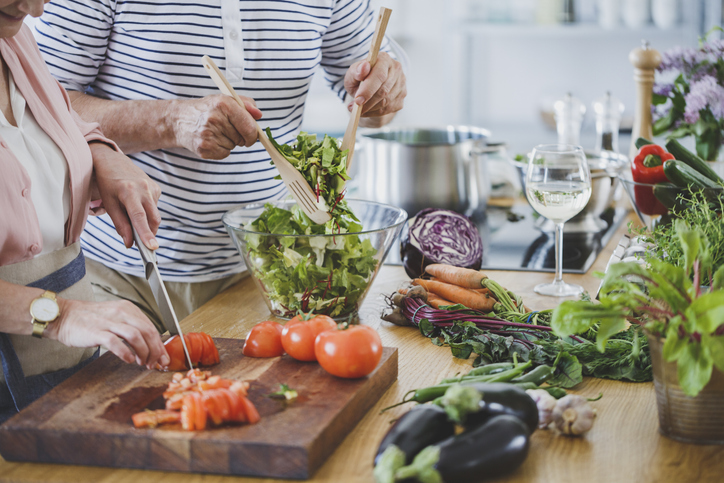Maintaining a nutritious diet is especially important as we get older, as it directly impacts our overall quality of life. Eating healthier can also help you manage chronic conditions that are more common among older adults, such as diabetes or heart disease. Yet, despite knowing this, many of us still struggle to maintain a balanced diet, especially as we age. Here, we explore why that is the case for so many, and offer tips on how you can start eating healthier.
Always speak with a doctor before starting any new diet. They can help determine what lifestyle changes are best for you based on your current health status.
Why Is It Harder to Eat Healthy As We Age?
Many of us know we should be incorporating a mix of fresh fruits and vegetables into our diets for optimal health. Lean protein and whole grains are also important dietary staples. However, no matter how informed we are about our dietary needs, eating healthy can still be a challenge. This is especially true for older adults, because our nutritional needs change over time.
As we grow older, our metabolism slows down. This means your body actually needs fewer calories than before. Meanwhile, your body needs more protein to preserve muscle mass and more of certain nutrients, such as potassium, calcium, vitamin D, dietary fiber and vitamin B12.
This combination of changes to metabolism and nutritional needs makes it harder for older adults to get the nutrients they need without consuming more calories than they need. The good news is, once you are aware of these challenges, you can begin to start planning how to eat healthier.
How to Start Eating Healthier
Eating healthier can seem difficult at first. But it doesn’t have to be. Here are some ways you can start building healthier habits while still getting enjoyment out of the food you consume.
Focus on Healthy Foods You Enjoy
You certainly don’t have to go hungry to eat healthy. You actually have quite a few food groups to choose from. According to the National Council on Aging, a healthy meal should include*:
- Lean protein (lean meats, seafood, eggs, beans)
- Fruits and vegetables (think orange, red, green and purple)
- Whole grains (brown rice, whole wheat pasta)
- Low-fat dairy (milk and its alternatives)
You should also learn how to read a nutrition facts label so that you can identify foods that are high in fiber and low in sodium or salt, while also checking for other key nutrients.
Eat Smaller Meals More Often
Some older adults actually experience reduced appetite as they get older. Eating smaller meals more often allows you to get the nutrients you need without being uncomfortable. Some people who maintain a healthy appetite as they age may also find they enjoy eating smaller meals.
Practice Healthy Snacking
Snacking isn’t bad if you eat the right foods. Things like baby carrots and hummus, celery with natural peanut butter and fruit or yogurt are all examples of healthy snacking options. Experiment with different snack food combinations to find what satisfies your hunger and brings you joy.
Drink Plenty of Water
Beyond healthy eating, it’s also important to drink plenty of water. While hydration is important for everyone, older adults have a tendency to lose some of their sense of thirst. Drinking tea and coffee — without the addition of heavy cream or sugar — can also help you stay hydrated.
See What Healthy Eating Looks Like at Friendship Village of South Hills
At Friendship Village of South Hills, a Life Care community in Upper St. Clair, Pennsylvania, near Pittsburgh, we provide many opportunities for residents to make healthy decisions. Our chefs specialize in creating fresh and varied meals across our dining venues. We also include weekly grocery trips among our regular transportation options for independent living residents.
Contact us or complete the form on this page to learn more about how Friendship Village of South Hills supports your total wellness, including healthy eating and staying active.


